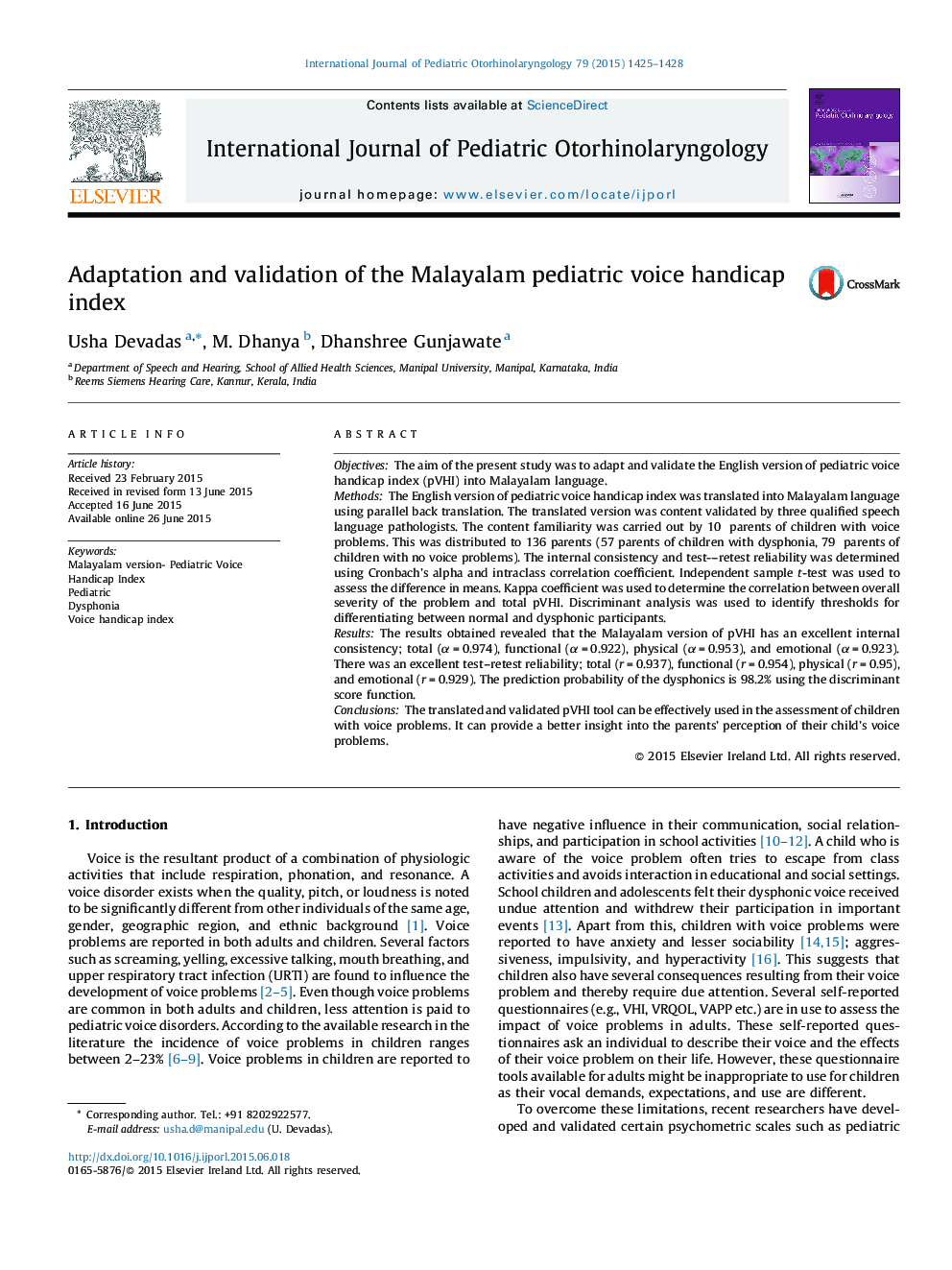| Article ID | Journal | Published Year | Pages | File Type |
|---|---|---|---|---|
| 4112084 | International Journal of Pediatric Otorhinolaryngology | 2015 | 4 Pages |
ObjectivesThe aim of the present study was to adapt and validate the English version of pediatric voice handicap index (pVHI) into Malayalam language.MethodsThe English version of pediatric voice handicap index was translated into Malayalam language using parallel back translation. The translated version was content validated by three qualified speech language pathologists. The content familiarity was carried out by 10 parents of children with voice problems. This was distributed to 136 parents (57 parents of children with dysphonia, 79 parents of children with no voice problems). The internal consistency and test-–retest reliability was determined using Cronbach's alpha and intraclass correlation coefficient. Independent sample t-test was used to assess the difference in means. Kappa coefficient was used to determine the correlation between overall severity of the problem and total pVHI. Discriminant analysis was used to identify thresholds for differentiating between normal and dysphonic participants.ResultsThe results obtained revealed that the Malayalam version of pVHI has an excellent internal consistency; total (α = 0.974), functional (α = 0.922), physical (α = 0.953), and emotional (α = 0.923). There was an excellent test–retest reliability; total (r = 0.937), functional (r = 0.954), physical (r = 0.95), and emotional (r = 0.929). The prediction probability of the dysphonics is 98.2% using the discriminant score function.ConclusionsThe translated and validated pVHI tool can be effectively used in the assessment of children with voice problems. It can provide a better insight into the parents’ perception of their child's voice problems.
